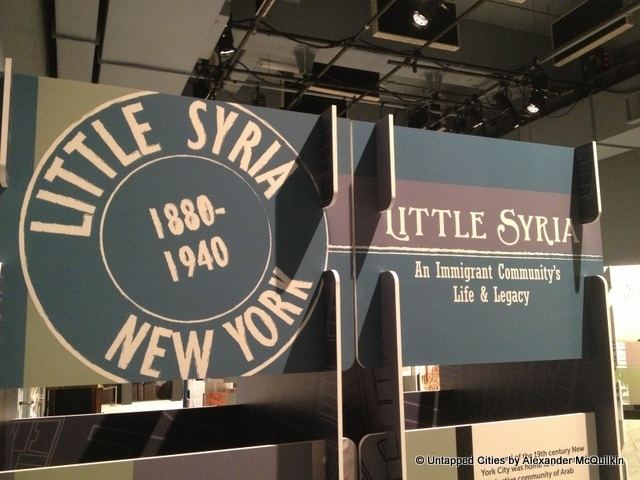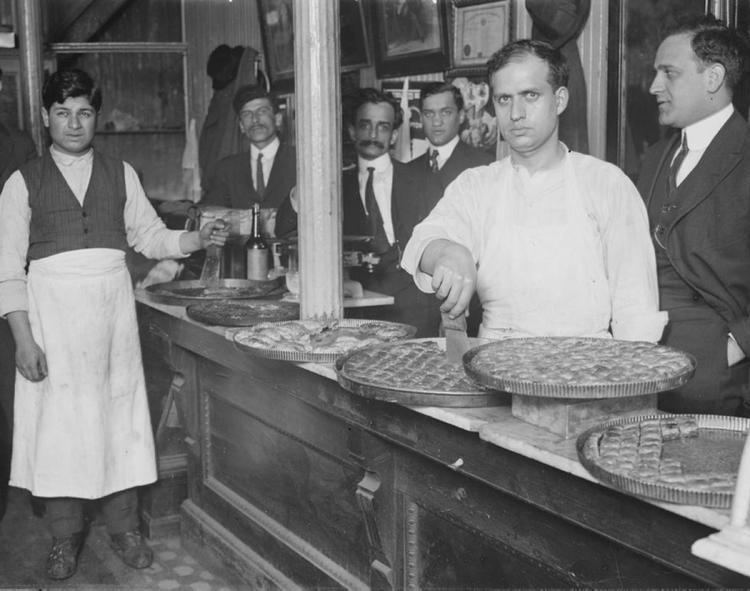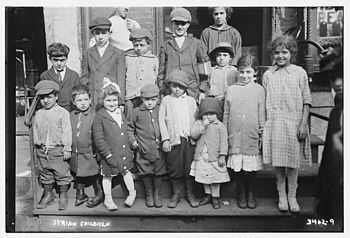Little Syria was a largely Arab-American but diverse neighborhood that existed in the New York City borough of Manhattan from the late 1880s until the 1940s, composed largely of Arab-Americans arriving from the Ottoman territory known as Greater Syria, the approximate area of which included in present-day Lebanon, Syria, Jordan, Israel and Palestine, during the Great Migration from 1880 to 1924. Also called the Syrian Quarter, it encompassed Washington Street from Battery Park to above Rector Street, roughly in present-day Tribeca.

The enclave, which was also sometimes called "the Syrian Quarter", in its greatest reach, overlapped with the future site of the World Trade Center, and even encompassed the St. Joseph's Maronite Church, whose cornerstone was found in the rubble after the September 11 terrorist attacks. It declined as a neighborhood as the inhabitants became successful and moved to other areas, especially Atlantic Avenue in Brooklyn, and disappeared almost entirely when a great deal of lower Washington Street was demolished to make way for entrance ramps to the Brooklyn-Battery Tunnel.

Description and history

The majority of the residents were Arabic-speaking Christians, Melkite and Maronite immigrants from present-day Syria and Lebanon who settled in the area in the late 19th century, escaping religious persecution and poverty in their homelands – which were then under control of the Ottoman Empire – and answering the call of American missionaries to escape their difficulties by traveling to New York City. The New York Times estimated that as many as 5% of the area's Arab residents were Muslims, who mostly came from the area of Palestine.

The neighborhood was a main center of New York’s first community of Middle Eastern immigrants. Lebanese-American writers Kahlil Gibran and Ameen Rihani were among the cultural luminaries that called Little Syria home, with other cultural, educational, and journalistic minds. It was in Little Syria the linotype machine was first modified to produce Arabic characters, which would transform Arabic-language journalism: the first Arabic-language periodicals in North America are all printed in New York, the first being Kawkab America in 1892. Later, over 50 Arabic-language periodicals came to be published out of the neighborhood, including Al-Hoda and The Syrian World.

The Christians in the neighborhood lived on Washington Street to the south of the site of the World Trade Center, where they established three churches, including St. George Chapel of the Melkite Rite, which as of 2010 survives as Moran's Ale House and Grill, and which was designated a New York City landmark in 2009. In addition to Lebanese, Syrians and Palestinians, many other ethnic groups lived in this diverse neighborhood, including Greeks, Turks, Armenians, Slovaks, Poles, Hungarians, Lithuanians, Ukrainians, Czechs, and Irish.

An 1899 article about the Syrian Quarter and its 3,000 residents described how the immigrants arriving there didn't "leave all their quaint customs, garments, ways of thinking at home," nor did they become "ordinary American citizens," but instead "just enough of their traits, dress, ideas remain, no matter how long they have been here, to give the colonies they form spice and a touch of novelty." Noting "a number of amazingly pretty girls," the reporter described Little Syria near the turn of the 20th century as a mix of social classes.
In his 2006 book The Arab Americans, Gregory Orfalea described Little Syria as "an enclave in the New World where Arabs first peddled goods, worked in sweatshops, lived in tenements and hung their own signs on stores." Naoum and Salloum Mokarzel created the publication Al-Hoda, adapting the Linotype machine to produce text in the Arabic alphabet, which "made possible and immeasurably stimulated the growth of Arabic journalism in the Middle East." By August 1946, residents and business owners on the stretch of Washington Street from Rector Street to Battery Place in what was then the "heart of New York's Arab world" had received condemnation notices, just years before the neighborhood was razed to create entrance ramps needed for the Brooklyn-Battery Tunnel, which opened in 1950.
In 2011, a collection of historic preservationists and Arab-American activists, under the "Save Washington Street" campaign, lobbied the Landmarks Preservation Commission and its chairman, Robert Tierney, to designate the Downtown Community House and the tenement at 109 Washington Street in Little Syria as city landmarks. A public park at the junction of Trinity Place, Greenwich Street and Edgar Street, the Elizabeth H. Berger Plaza honors the history of the former neighborhood through interpretive plaques and signs.
